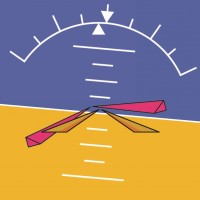Developing models for how humans rely on feedforward control responses in realistic discrete maneuvering tasks.
Understanding how humans control a vehicle (cars, aircraft, bicycles, etc.) enables engineers to design faster, safer, more comfortable, more energy efficient, more versatile, and thus better vehicles. In a typical control task, human controllers give control inputs to a vehicle such that it follows a particular reference path (e.g., the road) accurately.
To achieve this, human controllers use a control organization that resembles a closed-loop feedback controller, a feedforward controller, or a combination of both. In most realistic tasks, a strong feedforward control strategy is to be expected; yet, almost all previously available HC models describe the human as a pure feedback controller lacking the important feedforward response. Therefore, the goal of the research described in this thesis was to obtain a fundamental understanding of feedforward in human manual control.
Through human-in-the-loop experiments and the application of (novel) identification methods, a control-theoretical model of feedforward in manual control were developed. The central element of the feedforward model is the inverse of the controlled (vehicle) dynamics, equal to the theoretically ideal feedforward dynamics. However, it was also found that the HC is not able to apply a feedforward response with these ideal dynamics, and that limitations in the perception, cognition, and action loop need to be modeled by additional model elements: a gain, a time delay, and a low-pass filter.
Overall, this project demonstrates that feedforward is an essential part of human manual control behavior and should be accounted for in many human-machine applications.


